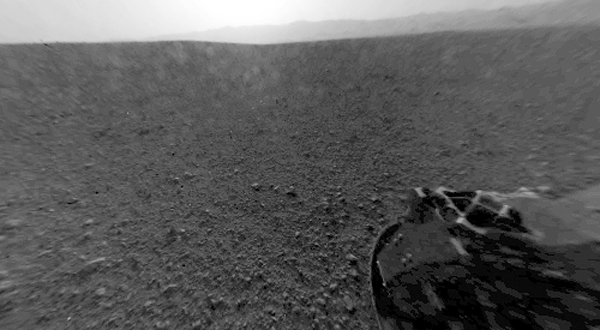So this is pretty neat, huh?
Look at us Earthlings, getting our Mars on. It’s too bad Ray Bradbury did not live long enough to see this, as he surely would have gotten a kick out of it.
To honor the occasion, and being the kind of person I am, it seems appropriate to consider the musicians who have paid musical tribute to the planet that has played such an inspired role in our literature (and imaginations).
First, props to the great George Russell for “going there” before we ever really went there. (And props to G.R. for being a genius and an American musician of the first order who does not get nearly as much love and attention as he warrants.)
How about the best way to travel? I’ll take the Coltrane. From a piece I wrote a few years back:
It was all over far too quickly. As is too often the case with our greatest artists, Coltrane fell ill and passed away long before his time should have come. It scarcely computes, even now, that the man making the music he recorded in early 1967 (particularly the shattering if cathartic Interstellar Space was months from losing a battle with cancer. Where he would have headed had he lived is truly difficult to imagine. It remains instructive, and more than a little startling, to consider the growth and refinement he demonstrated every few years, commencing in the mid-to-late ‘50s. Where he might have gone next is anyone’s guess, but it’s also safe to surmise that he took his instrument, and music, as far as anyone possibly could.
A lot more on Coltrane, HERE.
And huge props for the huge balls it took Nels Cline (another scarcely well-enough discussed iconoclast) to do an almost painfully –in a good way– faithful interpretation of Trane’s monument to infinity.
How about the man who truly did it first? Can we get some love for Gustav up in this MF?
How freaky, super-scary and intense is that noise? Classical kicks ass, yo!
And look who may have been tapping into that vibe? None other than you-know-who, the band that was originally (and, for the purposes of this discussion, ironically) called Earth.
Certainly wizards, warnings and wickedness abound on their debut, but it sounds today exactly like what was recorded: a ferocious and opportunistic young band putting everything on the table, fully aware they might never get a second shot. And despite all the silly mythmaking, the only thing demonic about this band was its proclivity for employing the musical tritone (also known as the Devil’s Interval) in its music. Blah blah blah; the less said trying to explain, or even consecrate this song—and the band that made it—the better: it speaks for itself loudly and proudly. More than four decades has done nothing to diminish the devastating impact of that final solo, a speed drill aimed directly at your brain; if you survive the experience nothing is ever the same.
A lot more about this band, here.
And tying many of the threads together: a band that was inspired by Holst; so much so that they changed the name of their note-by-note “tribute” in order to avoid the pesky payment of royalties. (Something, to his credit, Greg Lake would not duplicate with ELP when he/they gave full credit to both Bartok and Ginastera. Uber-irony, then, that the ever surly and penny-pinching Robert Fripp could so shamelessly steal from the masters.)
This tune, “The Devil’s Triangle”, is ideally named. Here is what I had to say about it back in 2010, on the occasion of it’s 40th anniversary.
Album centerpiece “The Devil’s Triangle (Parts 1-3)” is an unacknowledged riff on Holst’s classical piece “Mars” (from Planets), functioning as a descent even further into the abyss, following the title track that concludes the first album. Clearly this was the one Melody Maker had in mind when they suggested, in 1970, “If Wagner were alive, he’d work with King Crimson.” Nonsense like that makes it a little more understandable why this era was difficult for so many to stomach. Featuring more mellotron than most bands could conceivably cram into a double album, “The Devil’s Triangle” utilizes a drum and bass march, balancing dread and release with wind effects and jarring foghorn cries. Adore it or detest it, most honest listeners would concede that few bands did beauty and horror quite like King Crimson.
More on that album, here.
And since we kicked it off with a nod to George Russell thinking about where we might be going, let’s close it out with Sun Ra, who knew where we’d already been.

